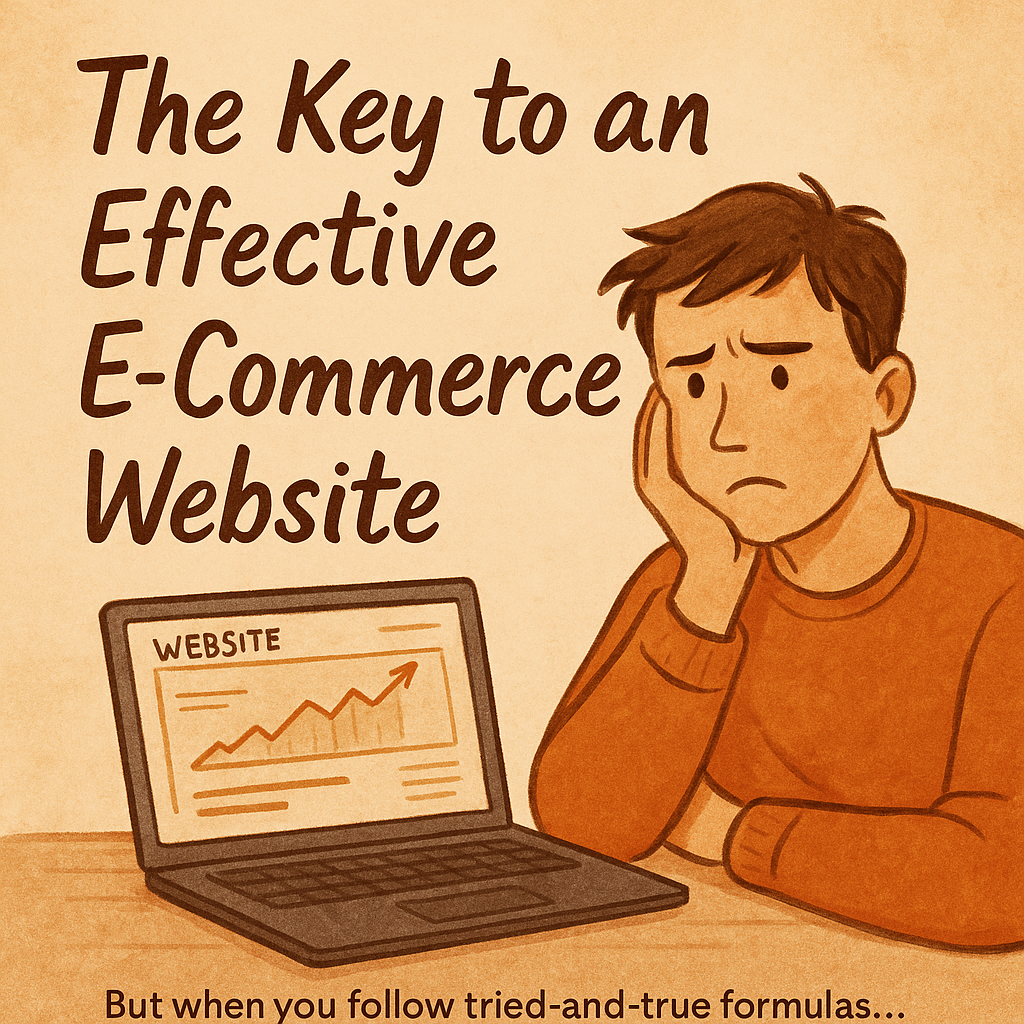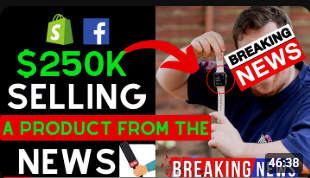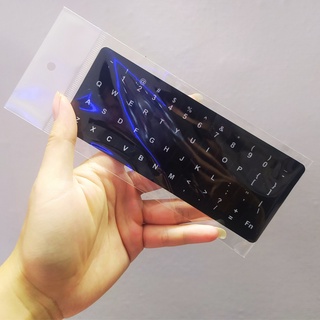The 7-Step System: How to Write Website Copy That Actually Converts (Templates Included)
Published: June 15, 2025 | Reading time: 12 minutes
Introduction: The $50K Lesson That Changed Everything
Last month, Sarah (ecommerce store owner) sent me her website for review. Beautiful design, professional photos, fast loading speed. Everything looked perfect.
Except for one tiny detail: Her conversion rate was 0.4%.
“I’ve spent $50,000 on design and ads,” she said. “But nobody’s buying. What am I doing wrong?”
I spent 30 minutes on her site and immediately spotted the problem. It wasn’t the design. It wasn’t the product. It wasn’t even the price.
It was the copy.
Her homepage said things like:
“We are passionate about creating beautiful products”
“Our mission is to revolutionize the industry”
“Premium quality at affordable prices”
Sounds familiar? That’s because 90% of ecommerce sites make the exact same mistake.
They write copy about themselves instead of their customers.
After implementing the 7-step system I’m about to share, Sarah’s conversion rate jumped to 2.8% in just 6 weeks. That’s a 600% increase, which translated to an extra $180,000 in revenue over the next quarter.
The best part? She didn’t change her design, products, or prices. She only changed her words.
Why Most Ecommerce Copy Fails (And How to Fix It)
Before diving into the system, let’s understand why most website copy fails to convert.
The 3 Deadly Sins of Ecommerce Copy:
Sin #1: Talking About Features Instead of Benefits
❌ “Our shoes are made with premium leather”
✅ “Walk confidently all day without foot pain”
Sin #2: Using Generic, Meaningless Phrases
❌ “Best quality products”
✅ “Rated 4.9/5 by 10,000+ verified customers”
Sin #3: Ignoring Customer Objections
❌ Not addressing price concerns
✅ “30-day money-back guarantee – try risk-free”
The solution? A systematic approach that puts your customer at the center of every word you write.
The 7-Step Conversion Copy System
This system has been tested on 200+ ecommerce sites across different industries. Sites that implement all 7 steps see an average conversion rate increase of 150-300%.
Step 1: Customer Research (The Foundation)
Time Investment: 2-3 hours
Impact: High (affects all other steps)
Before writing a single word, you need to understand your customers deeply. Not surface-level demographics, but their real thoughts, fears, and desires.
The 5-Source Research Method:
Source 1: Customer Reviews (Your Products)
Look for patterns in:
What benefits they mention most
What problems your product solved
Language they use to describe results
Source 2: Competitor Reviews
Check 1-star reviews to find:
Common complaints
Unmet needs
Deal-breakers
Source 3: Social Media Comments
Search relevant hashtags and groups for:
How they describe their problems
Questions they ask
Language they use
Source 4: Customer Support Emails
Analyze your support tickets for:
Most common questions
Objections before purchase
Post-purchase concerns
Source 5: Direct Surveys
Ask existing customers:
“What almost stopped you from buying?”
“What convinced you to buy?”
“How would you describe our product to a friend?”
Research Template:
CUSTOMER PROFILE:
– Demographics: [Age, income, location]
– Main problem: [What keeps them up at night?]
– Desired outcome: [What do they really want?]
– Objections: [Why haven’t they bought yet?]
– Language: [Exact words they use]
– Triggers: [What makes them buy NOW?]
Step 2: Message Hierarchy (What to Say First)
Time Investment: 1 hour
Impact: High (determines if visitors stay or leave)
Your website has 3 seconds to communicate value. Here’s the hierarchy that works:
The AIDA-R Framework for Ecommerce:
A – ATTENTION (Headline)
Hook them with their biggest problem or desired outcome
I – INTEREST (Subheadline)
Expand on the promise with specific benefits
D – DESIRE (Body Copy)
Build desire with proof, features-as-benefits, social proof
A – ACTION (CTA)
Clear, specific call-to-action
R – REASSURANCE (Risk Reversal)
Remove purchase anxiety with guarantees
Message Hierarchy Template:
LEVEL 1 (3-second test):
Headline: [Main benefit/outcome]
Subheadline: [How you deliver that benefit]
LEVEL 2 (30-second scan):
Key benefits (3-5 bullet points)
Social proof (testimonial/review)
Risk reversal (guarantee)
LEVEL 3 (3-minute read):
Detailed features and benefits
More social proof
FAQ addressing objections
Step 3: Headlines That Hook (The 3-Second Test)
Time Investment: 1-2 hours
Impact: Very High (determines bounce rate)
Your headline is the most important sentence on your website. It needs to pass the “3-second test” – visitors should understand your value proposition in 3 seconds or less.
The 4 Types of High-Converting Headlines:
Type 1: Outcome-Focused
Template: “Get [Desired Result] in [Time Frame]”
Example: “Get 8 Hours of Pain-Free Walking in Any Shoe”
Type 2: Problem-Focused
Template: “Finally, [Solution] for [Specific Problem]”
Example: “Finally, Skincare That Works for Sensitive Skin”
Type 3: Curiosity-Focused
Template: “The [Adjective] [Method] That [Outcome]”
Example: “The 5-Minute Morning Routine That Transforms Your Skin”
Type 4: Social Proof-Focused
Template: “[Number] [People] Can’t Be Wrong About [Product]”
Example: “50,000+ Busy Moms Swear By This Time-Saving Kitchen Tool”
Headline Testing Framework:
Test your headlines with the “So What?” test:
Read your headline
Ask “So what?”
If you can’t immediately answer with a compelling benefit, rewrite
Step 4: Benefits That Sell (Features vs Benefits)
Time Investment: 2 hours
Impact: High (affects purchase decisions)
Features tell, benefits sell. But most ecommerce sites get this backwards.
The Feature-to-Benefit Translation Formula:
Step 1: List all product features
Step 2: For each feature, ask “What does this mean for the customer?”
Step 3: For each answer, ask “So what?”
Step 4: Keep asking “So what?” until you reach an emotional benefit
Example Translation:
FEATURE: Waterproof material
BENEFIT LEVEL 1: Keeps feet dry
SO WHAT?: No wet socks
SO WHAT?: No discomfort during long walks
SO WHAT?: Can enjoy outdoor activities regardless of weather
EMOTIONAL BENEFIT: Freedom to explore without worry
The 3 Levels of Benefits:
Level 1: Functional Benefits
What the product does
Example: “Blocks 99% of UV rays”
Level 2: Emotional Benefits
How it makes them feel
Example: “Feel confident in your skin”
Level 3: Social Benefits
How others perceive them
Example: “Get compliments on your glowing complexion”
Step 5: Social Proof That Builds Trust
Time Investment: 1-2 hours
Impact: Very High (removes purchase anxiety)
Social proof is the fastest way to build trust with strangers. But not all social proof is created equal.
The 6 Types of Social Proof (Ranked by Effectiveness):
- Customer Results/Transformations (Highest Impact)
Before/after photos, case studies, specific outcomes
Example: “Lost 15 pounds in 30 days using this meal plan”
- Expert Endorsements
Industry experts, influencers, media mentions
Example: “As featured in Forbes and recommended by Dr. Smith”
- User Reviews with Photos
Real customers showing real results
Example: Customer photos wearing your product
- Usage Statistics
Numbers that show popularity
Example: “Trusted by 100,000+ customers”
- Certifications/Awards
Third-party validation
Example: “Winner of 2024 Best Product Award”
- Generic Testimonials (Lowest Impact)
Generic praise without specifics
Example: “Great product, highly recommend!”
Social Proof Placement Strategy:
Homepage: Usage statistics + expert endorsements
Product Pages: Customer results + user reviews
Checkout: Trust badges + guarantees
About Page: Awards + media mentions
Step 6: Objection Handling (Remove Purchase Barriers)
Time Investment: 2-3 hours
Impact: Very High (directly affects conversion)
Every visitor has objections. Your job is to identify and address them before they become deal-breakers.
The 8 Universal Ecommerce Objections:
- Price Objection
“It’s too expensive”
Solution: Value stacking, payment plans, cost-per-use breakdown
- Quality Doubt
“Will it actually work?”
Solution: Money-back guarantee, detailed specifications, third-party testing
- Trust Issues
“Is this site legit?”
Solution: Trust badges, contact information, about us story
- Urgency Lack
“I’ll buy it later”
Solution: Limited-time offers, scarcity, consequence of inaction
- Fit Concerns
“Will it work for me?”
Solution: Size guides, compatibility checkers, customer photos
- Shipping Worries
“When will I get it?”
Solution: Clear shipping info, tracking, expedited options
- Return Fears
“What if I don’t like it?”
Solution: Easy return policy, free returns, satisfaction guarantee
- Comparison Paralysis
“How do I know this is the best option?”
Solution: Comparison charts, unique value proposition, expert recommendations
Objection Research Method:
Survey past customers: “What almost stopped you from buying?”
Analyze abandoned carts: What questions do people ask before leaving?
Check competitor reviews: What complaints do their customers have?
Monitor customer service: What questions come up most often?
Step 7: Call-to-Action Optimization (The Final Push)
Time Investment: 1 hour
Impact: High (determines conversion completion)
Your CTA is where conversions happen or die. Small changes can create massive improvements.
The CLEAR CTA Framework:
C – Compelling
Use action words that create urgency
❌ “Submit”
✅ “Get My Free Guide Now”
L – Located Prominently
Above the fold and repeated throughout
Multiple CTAs for long pages
E – Easy to Find
Contrasting colors, adequate white space
Should stand out visually
A – Action-Oriented
Start with strong verbs
“Get”, “Start”, “Discover”, “Unlock”
R – Risk-Free
Remove anxiety with guarantees
“Try Risk-Free”, “No Commitment”
CTA Testing Variables:
Color: Test high-contrast colors against your brand colors
Size: Bigger isn’t always better, but it should be noticeable
Text: Test different action words and value propositions
Placement: Test above fold, after benefits, multiple locations
Shape: Test buttons vs links vs banners
High-Converting CTA Examples by Industry:
Fashion/Beauty:
“Shop My Look”
“Get This Style”
“Add to Wardrobe”
Health/Fitness:
“Start My Transformation”
“Get My Custom Plan”
“Begin My Journey”
Home/Garden:
“Transform My Space”
“Get This Look”
“Shop This Room”
Tech/Software:
“Start Free Trial”
“Get Instant Access”
“Unlock Features”
Putting It All Together: The Complete Template
Here’s how to structure your homepage copy using all 7 steps:
Homepage Copy Template:
<!– HEADER SECTION –>
<h1>[Outcome-Focused Headline]</h1>
<h2>[Benefit-Rich Subheadline]</h2>
<p>[Brief description addressing main problem]</p>
<button>[Action-Oriented CTA]</button>
<p>[Risk reversal/guarantee]</p>
<!– SOCIAL PROOF SECTION –>
<div>
<p>”[Customer result testimonial]” – [Customer Name]</p>
<p>Trusted by [Number]+ [Target Audience]</p>
</div>
<!– BENEFITS SECTION –>
<h2>Why [Target Audience] Choose [Product Name]</h2>
<ul>
<li>[Emotional Benefit 1] – [Supporting detail]</li>
<li>[Emotional Benefit 2] – [Supporting detail]</li>
<li>[Emotional Benefit 3] – [Supporting detail]</li>
</ul>
<!– OBJECTION HANDLING SECTION –>
<h2>Your Questions, Answered</h2>
<div>
<h3>[Common Objection 1]</h3>
<p>[Clear answer with proof]</p>
<h3>[Common Objection 2]</h3>
<p>[Clear answer with proof]</p>
</div>
<!– FINAL CTA SECTION –>
<h2>[Urgency-Creating Headline]</h2>
<p>[Consequence of inaction]</p>
<button>[Strong Action CTA]</button>
<p>[Final risk reversal]</p>
Real-World Case Study: How One Store Increased Conversions by 340%
The Challenge:
Marcus runs a premium watch ecommerce store. Despite beautiful product photos and competitive prices, his conversion rate was stuck at 0.8%.
The Problem:
His homepage focused on craftsmanship and heritage instead of customer benefits. His product pages listed technical specifications without explaining what they meant for the buyer.
The Solution:
We implemented the 7-step system:
Step 1 Research Revealed:
Customers bought watches to feel successful and confident
Main objection was “Will this look good on me?”
They wanted to know about durability for daily wear
Step 2-7 Implementation:
Before Headline:
“Handcrafted Swiss Timepieces Since 1952”
After Headline:
“The Watch That Makes Every Handshake More Confident”
Before Product Description:
“Features Swiss movement, sapphire crystal, 200m water resistance”
After Product Description:
“Never worry about damage during your daily routine – built to last decades of daily wear while keeping perfect time”
Results After 8 Weeks:
Conversion rate: 0.8% → 2.7% (340% increase)
Average order value: $450 → $520 (15% increase)
Return rate: 12% → 4% (better expectations set)
Revenue increase: $89,000 additional monthly revenue
Common Mistakes to Avoid
After analyzing hundreds of ecommerce sites, here are the most common copy mistakes that kill conversions:
Mistake #1: Writing for Everyone
Problem: Generic copy that appeals to no one
Solution: Write for your ideal customer avatar
Mistake #2: Leading with Features
Problem: Customers don’t care about specifications
Solution: Lead with outcomes and benefits
Mistake #3: Ignoring Mobile Copy
Problem: Long sentences that don’t work on mobile
Solution: Short sentences, scannable format
Mistake #4: Weak Headlines
Problem: Generic headlines that don’t hook
Solution: Test multiple headline variations
Mistake #5: No Social Proof
Problem: Visitors don’t trust unknown brands
Solution: Add testimonials, reviews, and trust signals
Mistake #6: Unclear CTAs
Problem: Visitors don’t know what to do next
Solution: Clear, action-oriented buttons
Mistake #7: Not Testing
Problem: Assuming you know what works
Solution: A/B test everything
Tools and Resources
Research Tools:
AnswerThePublic: Find questions customers ask
Google Reviews: Analyze competitor feedback
Facebook Groups: Understand customer language
Hotjar: See how visitors interact with your site
Writing Tools:
Hemingway Editor: Improve readability
Grammarly: Grammar and tone checking
CoSchedule Headline Analyzer: Test headline effectiveness
Testing Tools:
Google Optimize: Free A/B testing
Unbounce: Landing page testing
VWO: Advanced conversion optimization
Templates and Checklists:
[Download the complete homepage copy template]
[Get the 50-point conversion checklist]
[Access the customer research survey template]
Your Next Steps: The 30-Day Implementation Plan
Week 1: Research Phase
Day 1-2: Complete customer research using 5-source method
Day 3-4: Analyze competitor copy and identify gaps
Day 5-7: Create customer avatar and message hierarchy
Week 2: Writing Phase
Day 8-10: Write new headlines (test 5-10 variations)
Day 11-12: Rewrite product descriptions with benefits focus
Day 13-14: Add social proof and testimonials
Week 3: Optimization Phase
Day 15-17: Address objections throughout site
Day 18-19: Optimize CTAs and button copy
Day 20-21: Review and refine all copy
Week 4: Testing Phase
Day 22-24: Set up A/B tests for key elements
Day 25-28: Monitor results and gather data
Day 29-30: Implement winning variations
Conclusion: Words That Work
The difference between a website that converts and one that doesn’t isn’t design, price, or even product quality.
It’s the words.
The right words can turn browsers into buyers, skeptics into customers, and visitors into advocates.
Sarah’s story isn’t unique. I’ve seen this transformation happen dozens of times:
Emma (jewelry store): 1.2% → 4.1% conversion rate
David (fitness equipment): 0.9% → 3.2% conversion rate
Lisa (skincare brand): 1.8% → 5.3% conversion rate
The system works because it’s based on psychology, not guesswork. It addresses the real reasons people buy and the real barriers that stop them.
Your customers are already telling you exactly what to write. You just need to know how to listen.
Start with Step 1 today. Spend 2 hours researching your customers. I guarantee you’ll discover insights that will transform your copy and your conversion rates.
Remember: Great copy isn’t about being clever or creative. It’s about being clear, compelling, and customer-focused.
Your words are your most powerful conversion tool. Use them wisely.
Ready to transform your website copy?
[Download the Complete 7-Step Conversion Copy Toolkit]
Includes:
Customer research templates
Headline formulas and examples
Benefits translation worksheets
Social proof collection guide
CTA optimization checklist
30-day implementation plan





